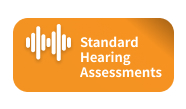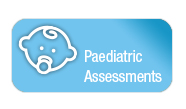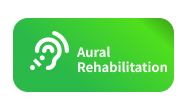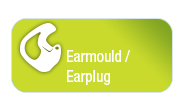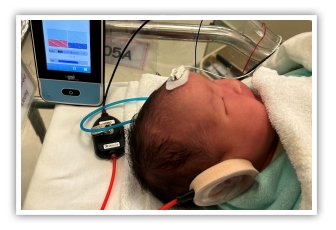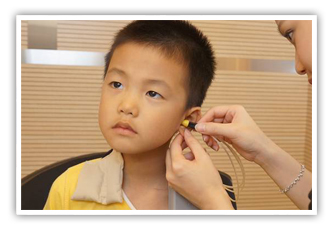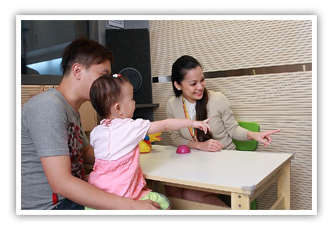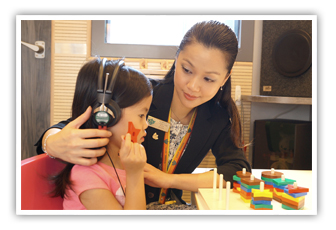Newborn Hearing Screening (NHS) – Audiologists will perform the following two non-invasive hearing screening tests to newborns soon after birth:
Otoacoustic Emissions Screening (OAE Screening) |
|||||
| To assess functionality of cochlear outer hair cells. | |||||
| Age: | Newborns and young children | 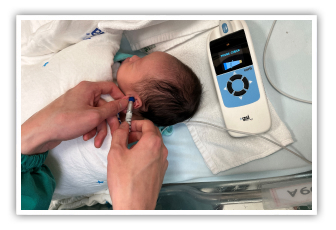 |
|||
| Procedure: |
|
||||
| Results: | Results show the responses of the inner ear outer hair cells of the cochlear, confirming cochlear integrity. | ||||


